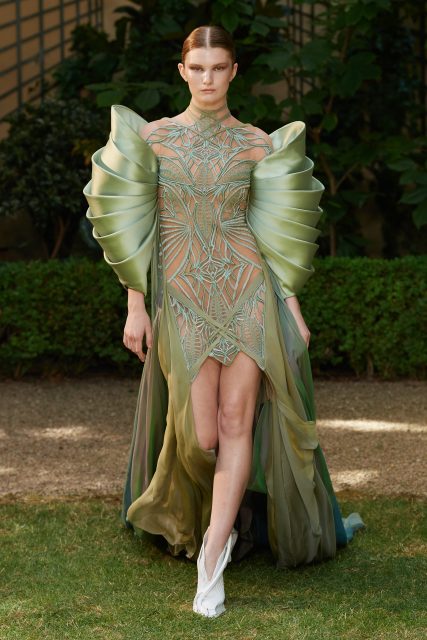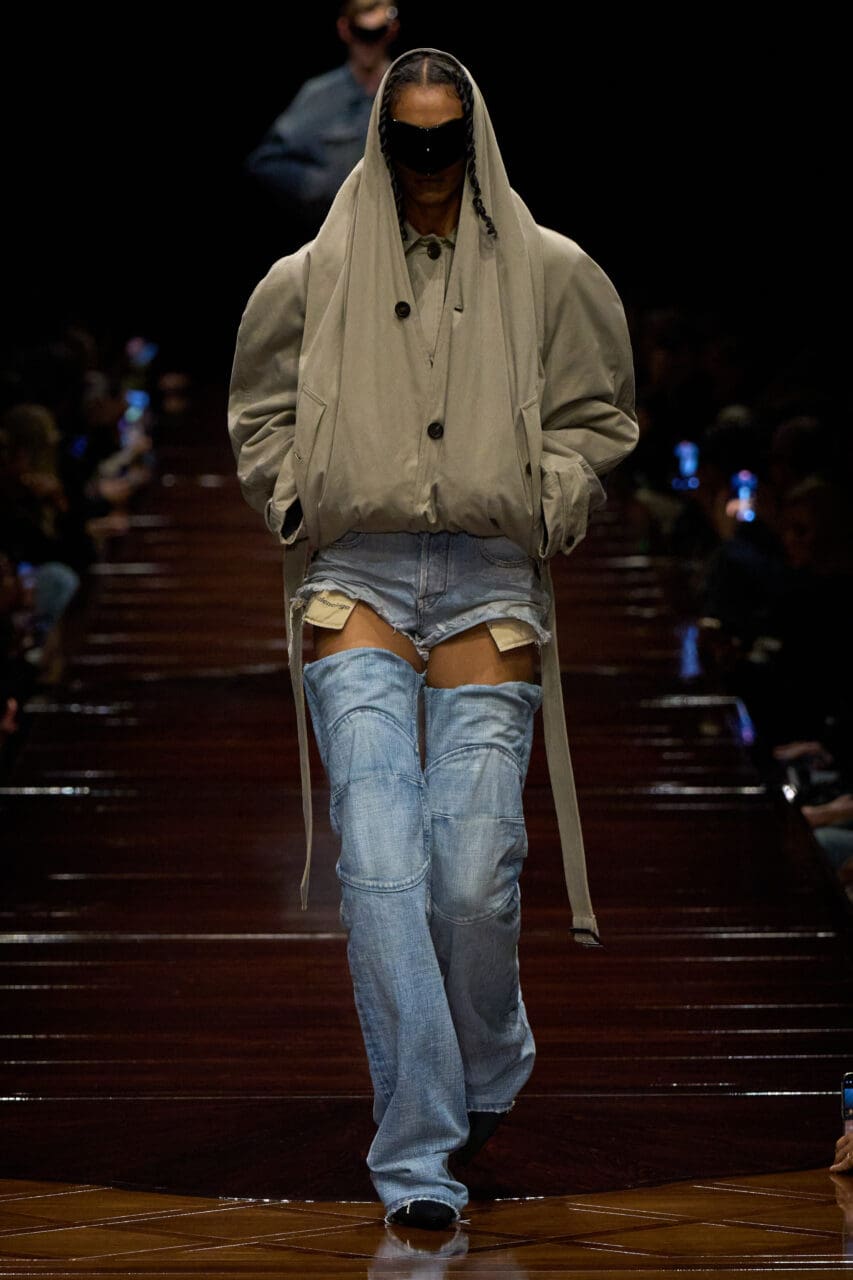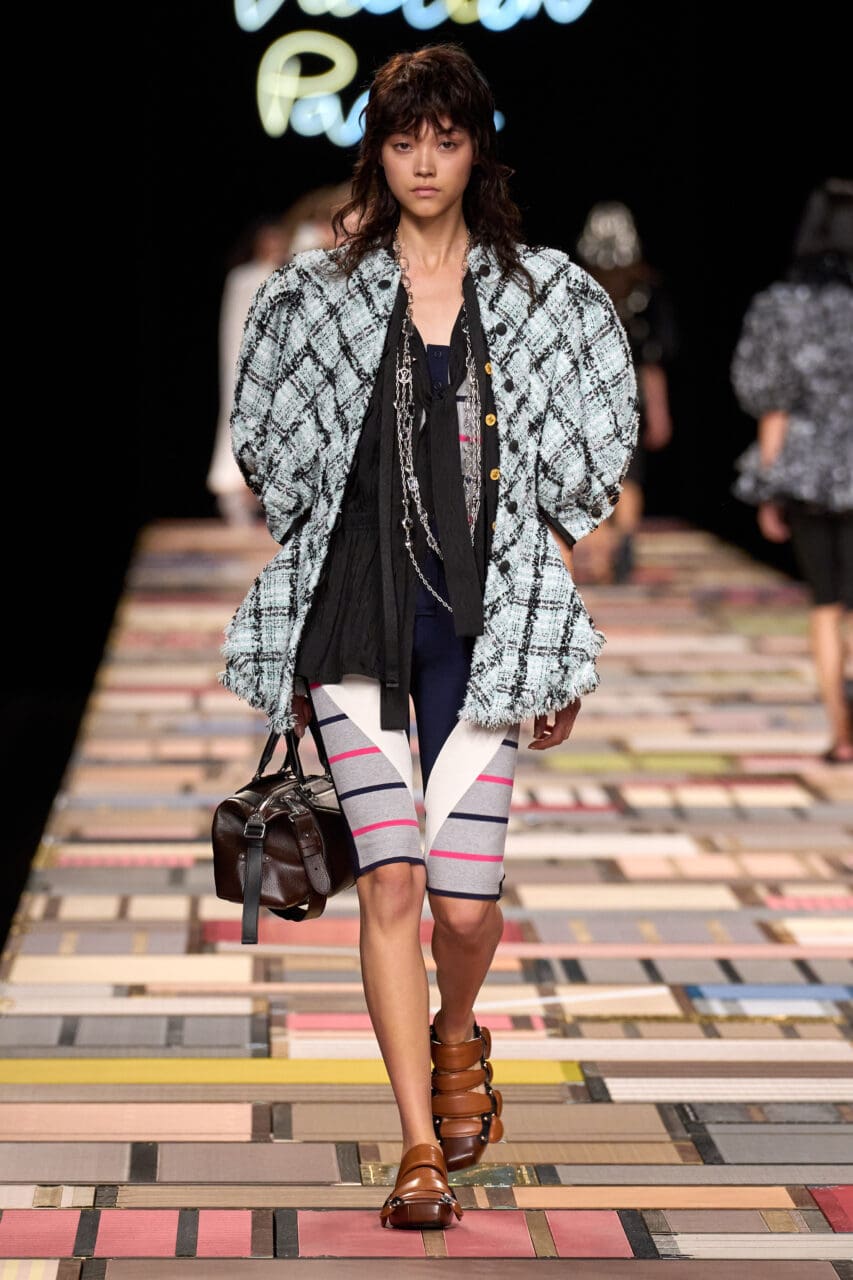Thom Browne’s entrance into Paris haute couture couldn’t have been more dramatic. He’s hardly a stranger to the city, having shown here for years. But after we climbed the steep, creaky wooden stairs at the back of the Paris Garnier Opera house—the artists’ entrance for generations—we suddenly realized that we were actually seated on the stage. Then the curtain went up. And we gasped to see that the red and gold auditorium was entirely populated from the stalls to the gods by black and white cut-out illustrations of someone who looked very much like Thom himself. Three thousand in fact, he told us later.
You had to wonder: was there to be something autobiographical in the formal introduction as a couturier he was about to make on this storied stage? Well, there was definitely a momentous sense of occasion in it for him. “It’s really special—the idea of taking almost American sportswear, the tailoring we do, and bringing it into a couture setting,” he said. “I thought it was important, even in representing American fashion.”
On our seats were the tiniest scrolls, the size of fortune cookies, tied up in Thom Browne ribbon. On them were cryptically printed one half of the English proverb, “A bird in the hand…”
To the strains of Visage’s “Fade to Grey,”Alek Wek walked up the aisle and onto the stage wearing—what else—a gray Thom Browne jacket and kilt. She sat on a pile of gray luggage, and things commenced around her. There were Thom Browne gray suits and coats in multitudes, all strictly narrow in silhouette, but each almost a vignette in itself.
There were patchworks of small country town landscapes, and seasides with sailboats. There were elaborate brocades, Prince of Wales checks, coats and short-suits embroidered with silver and gold sequined stripes. One coat had a pattern of 3D clouds woven into it.
Strange symbolic people began to come and go. Eleven characters dressed as bells, with bell-hats and enormous swollen patchworked coats and bells as spurs on their heels. Pigeon-people—one being Jordan Roth—in feathery bodysuits emerging from huge hip-level blazers.
The drama took sinister turns. Bells on the soundtrack began to take on a funereal tone. A woman in extravagant black Edwardiana visited and left. And then another, in white. Ultimately, there was a visitation of someone in a white sequined coat, with a conceptual train on their head. Stephen Jones had obviously been working overtime, too. Then finally, a bride in a white coat-dress.
We piled into the wings to find the newly-minted American couturier of Paris. He related the script—a dark psychodrama with a happy ending. “The main character was sitting at the station, thinking about her life and not being very happy. And then all of a sudden she sees all of her fantasies walking in,” he related. “She was planning on drowning in her sorrows. So that was the reason for all the underwater kind of things—the preppy East Coast iconography that I play with all the time. But then she realizes her life was actually better than she thought. So she didn’t get on the train.”
Ah: so the bird in the hand (pigeons or maybe seagulls?) did turn out to be worth two in the bush. And the bells? No-one asked, but could they have been some sort of American symbol of Independence, stand-ins for the Liberty Bell, which happens to be housed in the very town Browne was raised in, Allentown , PA?
Hard to be sure, but it seemed like a very American story about redemption and triumph—over depression and set-back. In any case, Browne was beaming. The evening was mission accomplished in a straightforward yet ever so deep and technically complicated way. “I wanted people to know me for what I do—starting with tailoring, and conceptual ideas, and giving you the story,” he concluded. “I was just doing what I do, but heightening it to a level that was worthy of showing this week.”
Editor
Sarah MowerCredit
Lead image: Filippo Fior / Gorunway.com





